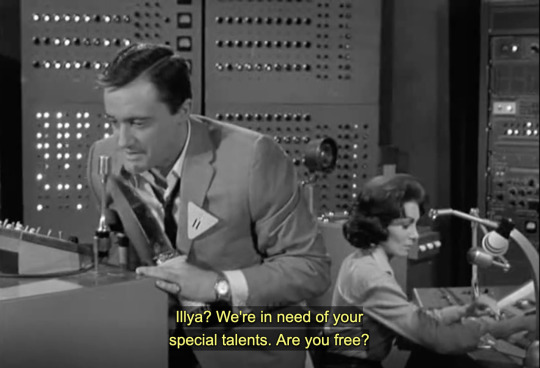hi im dan im 26 im gay and i like spies and ocs and complaining about everything. melbourne australia.
Don't wanna be here? Send us removal request.
Text
When I was a kid my family pretended to get raptured so I would think I was left behind on earth while they all went to heaven.
I was like 8 years old and my sister and mom had gotten really into the Left Behind novels (bible fan fic about the rapture). In the books when the rapture happened the clothes that people were wearing when they got raptured were left behind in neatly folded piles.
One day when I was getting home from school my family decided that they would leave piles of neatly folded clothes around the house, and then hide in the basement.
The intended effect was that I would get home and see the clothes then, think that my family had been raptured and that I wasn’t good enough to get into heaven… or something?
The problem was that I had never read these books, and didn’t really think about the rapture very often. There was no reason that I would see some laundry on the floor and think “The rapture happened and I’ve been abandoned by God! I’ll never see my family again!! Oh nooo!!!!”
I just sat down and watched cartoons and eventually my family got bored and revealed that they were all hiding in the basement.
It’s a good thing I didn’t understand the joke, otherwise that shit would have been traumatic.
79K notes
·
View notes
Text
My one friend group can't stop saying, "See you in hell!" in a cheerful voice instead of, "Talk to you later!" and my other friend group can't stop calling things "penis" instead of "cool" or "good", so I just unironically uttered the phrase, "Sounds penis, see you in hell," as I got off the phone.
94K notes
·
View notes
Text


Daniel Craig as James Bond, filming a subsequently-deleted scene in Spectre (2015)
90 notes
·
View notes
Photo

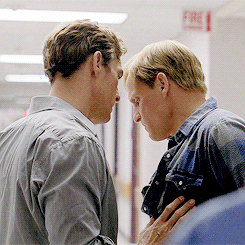


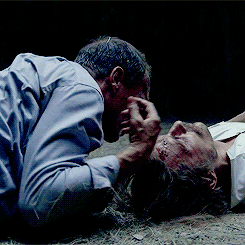
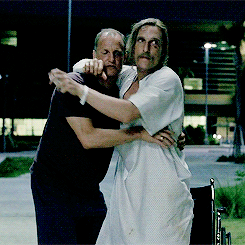
4K notes
·
View notes
Text

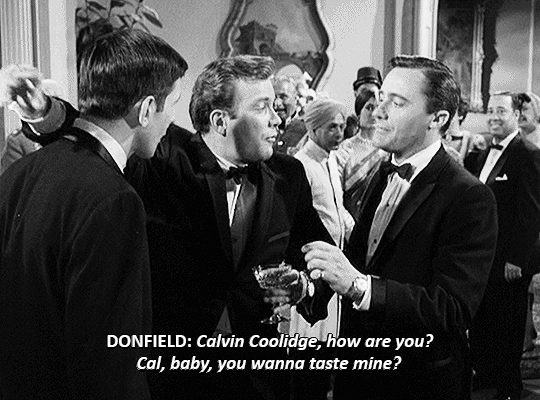

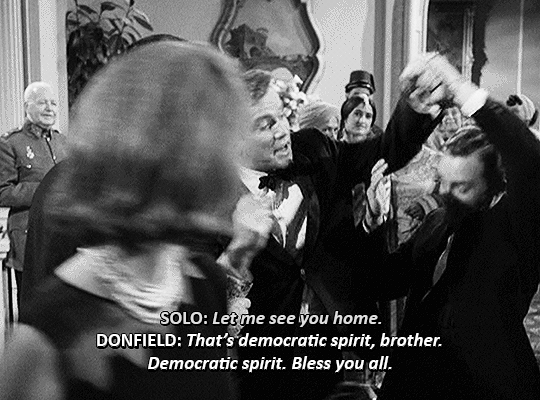


LEONARD NIMOY (Vladeck) and WILLIAM SHATNER (Michael Donfield) appearing together for the first time in The Man from U.N.C.L.E. episode "The Project Strigas Affair" (1964), directed by Joseph Sargent
2K notes
·
View notes
Text
diversity win! your unreliable narrator is gay
19K notes
·
View notes
Text
gene roddenberry: star trek just got greenlit for a season two but we’re out of ideas for episodes
theodore sturgeon: what if we made spock horny, just really Fucking horny, just absolutely a sex-starved mess,
gene roddenberry: you’re hired
3K notes
·
View notes
Text

no tumblr i'm not gonna spam those so the left counter overflows and turns into "TUM" or something equally corny
56K notes
·
View notes
Text
imagine you're some guy and you're going through the woods one day and you stumble upon a house and the people who live there just give you free food and eventually let you inside and it's like nothing you've ever seen before and the people are so nice and loving towards you and then one day they decide to never let you leave again, steal your balls, and give you a stupid fucking hair cut
77K notes
·
View notes
Text
The Writer's Guide to Authentic Wounds and Fatalities
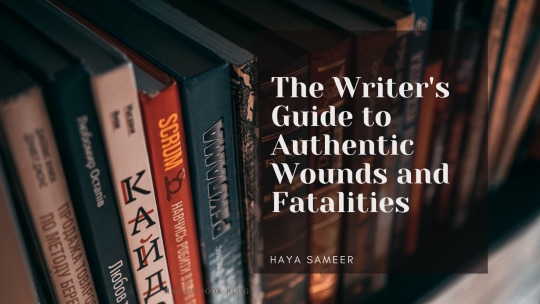
Writing fatal injuries in a story requires a delicate balance between realism and narrative impact. The portrayal of these life-altering events can evoke strong emotions in readers and shape the trajectory of your characters' journeys. In this blog, I will explore the intricacies of depicting fatal injuries in a manner that feels authentic, engaging, and respectful to the gravity of such circumstances. By understanding the nuances of fatal injuries, you will be equipped to craft compelling narratives that resonate with your readers.
Writing Fatal Injuries
When it comes to writing fatal injuries, it is crucial to approach the subject with care and accuracy. Fatal injuries carry immense consequences for your characters and can shape the trajectory of your story. By delving into the intricacies of portraying fatal injuries authentically, you can ensure that the gravity and impact of such events are effectively conveyed to your readers.
Choosing the right injuries for your story
Selecting the appropriate fatal injuries for your narrative involves considering various factors. Ask yourself: What purpose does this injury serve within the story? How does it affect the characters and the overall plot? Conduct thorough research to identify injuries that align with your story's context and resonate with the emotional journey of your characters.
For example, in a historical drama, you may research common fatal injuries during a particular era, such as battlefield injuries, diseases, or accidents prevalent at the time. In a crime thriller, you might explore the portrayal of fatal gunshot wounds or traumatic injuries resulting from violent encounters. By aligning the injuries with the context and themes of your story, you create a more immersive and believable experience for your readers.
Researching the mechanics of fatal injuries
To portray fatal injuries convincingly, it is essential to delve into the mechanics behind them. Understand the specific anatomical structures and systems involved, as well as the forces or mechanisms that can lead to fatal outcomes. Explore medical resources, consult experts if possible, and gather insights into the physiological and psychological implications of such injuries.
For instance, if your character suffers a fatal stab wound, research the anatomy involved, the potential organs affected, and the potential consequences such as internal bleeding or organ failure. By understanding the specific details and implications of the injury, you can describe the physical and emotional toll it takes on the character with greater accuracy and depth.
Depicting the immediate aftermath
When writing about fatal injuries, vividly describe the immediate aftermath to capture the intense emotions and physical realities. Consider the sensory details, the shock and disbelief experienced by characters, and the chaotic environment that often surrounds such events. Balancing realism with the needs of your story, create a scene that immerses readers and evokes empathy.
For example, if a character experiences a fatal car accident, you can depict the chaos at the scene, the character's disorientation, and the reactions of witnesses. Emphasize the sensory details such as the sound of screeching tires or the smell of burning rubber, creating a visceral experience for your readers.
Emotional and dramatic impact on the narrative
The impact of fatal injuries extends beyond the immediate moment. Explore the ripple effects on other characters, relationships, and the overall plot. Delve into the emotional responses, grief, guilt, anger, or determination that arises in the aftermath of loss. Utilize these emotional arcs to deepen character development and drive the narrative forward.
For instance, the loss of a loved one due to a fatal illness might lead to grief and strained relationships among the remaining family members. The emotional journey of a character grappling with guilt and seeking redemption after causing a fatal accident can become a central theme in your story. By delving into these emotional arcs and their consequences, you add depth and resonance to your narrative.
Writing Minor Injuries
While fatal injuries may capture our attention with their dramatic impact, it is equally important to pay attention to the portrayal of minor injuries in your writing. Minor injuries, though less severe, can still significantly affect your characters and contribute to the authenticity of your story. In this section, we will explore the art of depicting minor injuries, ensuring that they are not overlooked or trivialized. By delving into the nuances of minor injuries, you can add depth and realism to your characters' experiences.
Types of minor injuries to consider
When crafting your story, it is essential to consider a range of minor injuries that can occur. These injuries can include cuts, bruises, sprains, minor burns, or even minor fractures. Each type of injury carries its own unique characteristics, associated pain levels, and recovery processes. By understanding these distinctions, you can create accurate and believable depictions that resonate with your readers.
For example, a character who sustains a cut on their hand may experience sharp pain, the sight of blood, and the need for immediate first aid. On the other hand, a character with a sprained ankle may struggle with mobility, experience swelling, and require rest and care for a few days. By paying attention to these specific details, you can enhance the realism of your storytelling.
Conveying pain and discomfort
When writing about minor injuries, it is important to effectively convey the pain and discomfort experienced by your characters. Consider describing the sensation of pain, the throbbing or stinging feeling, and how it affects their daily activities or interactions. Showcasing the emotional impact of pain, such as frustration, irritation, or vulnerability, can deepen the readers' connection to the character's experience.
For instance, if a character suffers from a sprained wrist, you can describe the dull ache that persists, making simple tasks like typing or holding objects challenging. By capturing these small but significant moments, you immerse readers in the character's struggle and create a more realistic portrayal.
Balancing realism with narrative pace
While it is important to depict minor injuries realistically, it is also crucial to strike a balance with the overall pace and momentum of your story. Consider the significance of the injury within the larger context of your narrative. Some injuries may require more detailed attention and impact the plot, while others may serve as background elements. Adjust the level of detail and focus accordingly, ensuring that the portrayal of minor injuries aligns with the narrative's flow.
For example, a small cut on a character's finger may not require an extensive description unless it becomes infected or triggers an unexpected consequence. By aligning the portrayal of minor injuries with their narrative relevance, you maintain a consistent pace while still acknowledging their impact on your characters' lives.
Writing Bloodshed And Realistic Blood Loss
When writing about wounds and injuries, it is essential to consider the amount of blood loss your characters may experience. Realistic portrayal of bloodshed can enhance the authenticity of your scenes and immerse readers in the gravity of the situation. In this section, we will explore the factors influencing blood loss and techniques for accurately depicting it in your writing.
Understanding blood loss and its impact on the body
To authentically portray blood loss, it's crucial to have a basic understanding of how the human body responds to injury. Research the circulatory system and the role of blood in transporting oxygen and nutrients throughout the body. Consider the different types of blood vessels and their potential for bleeding when injured. This knowledge will help you create realistic scenarios and determine the appropriate level of blood loss for specific injuries.
Factors influencing blood loss in different injury scenarios
The amount of blood loss can vary depending on the severity and location of the injury. Factors such as the size of blood vessels, the rate of bleeding, and the body's ability to clot play a significant role. For example, a deep laceration in an artery will result in more substantial blood loss compared to a superficial cut on the skin. Consider these factors when describing injuries and their resulting bloodshed.
Techniques for accurately portraying blood loss in writing
There are several techniques you can use to convey the realistic impact of blood loss in your writing. Describing the color, consistency, and flow of blood can provide vivid imagery. You can also include physical symptoms such as dizziness, weakness, or fainting that may accompany significant blood loss. Additionally, consider the emotional response of your characters and how they react to the sight of blood or their own injuries.
By incorporating these techniques, you can create scenes that evoke a visceral response in readers and enhance the authenticity of your writing.
Bruises: Colors, Progression, and Pain
Bruises are a common result of injuries, and understanding how they form, change in color, and cause discomfort can greatly enhance the realism of your writing. By accurately describing bruises, you can bring depth to your characters' injuries and portray their healing process convincingly.
Understanding the stages and colors of bruises
Bruises go through distinct stages of color as they heal. Initially, they may appear red or purple due to the broken blood vessels beneath the skin. Over time, the color changes to blue, green, yellow, and eventually fades to a brown or yellowish hue. Understanding this color progression can help you accurately describe the age of a bruise and the healing process.
For example, a fresh bruise might be vivid purple, indicating recent trauma, while a fading bruise may have a yellowish tinge, suggesting that healing has begun. By incorporating these color details, you can add realism to your characters' injuries and track the passage of time within your narrative.
Depicting the progression of bruises over time
As bruises heal, they often change in appearance and size. Initially, a bruise may be small and localized, but it can gradually spread and become more extensive. Describing this progression can provide a sense of the healing process and the passage of time within your story.
For instance, a character who sustains a significant blow to the face may develop a bruise that starts as a small spot near the eye but expands to cover a larger area over the next few days. By accurately portraying the progression of bruises, you enhance the authenticity of your characters' injuries and their recovery.
Conveying the pain and sensitivity associated with bruises
Bruises can be painful, sensitive to touch, and affect a character's movement and daily activities. Describing the pain and discomfort experienced by your characters can create empathy and immerse readers in their physical ordeals.
Consider conveying the tenderness of a bruise when pressure is applied, the throbbing sensation, or the limitation of movement due to the pain.
Remember The Side Effects
Injuries, whether minor or severe, often come with a range of side effects that can significantly impact your characters' lives. These side effects can extend beyond the physical realm and encompass emotional, psychological, and social aspects.
Physical side effects
Injuries can have profound physical side effects that go beyond the immediate pain and discomfort. Consider the potential consequences such as limited mobility, impaired coordination, chronic pain, or the need for assistive devices like crutches or braces. Describing these physical side effects can add depth to your characters' struggles and provide a realistic portrayal of their healing journey.
For example, a character who sustains a leg injury may experience difficulty walking, require physical therapy, or have long-term complications that affect their day-to-day activities. By addressing these physical side effects, you create a more nuanced depiction of the aftermath of injuries.
Emotional and psychological side effects
Injuries can have a profound emotional and psychological impact on characters. They may experience fear, anxiety, trauma, or a loss of confidence. Consider how the injury affects their self-image, relationships, or mental well-being. Explore the emotional journey your characters undergo as they navigate the aftermath of their injuries.
For instance, a character who survives a near-fatal accident may develop post-traumatic stress disorder (PTSD) and struggle with recurring nightmares or panic attacks. By incorporating these emotional and psychological side effects, you can deepen the complexity of your characters and their responses to traumatic experiences.
Social implications and changes
Injuries can also lead to significant social changes for your characters. They may face challenges in their personal relationships, encounter stigma or discrimination, or experience changes in their roles or identities. Explore how the injury affects their interactions with others and their sense of belonging in the world.
For example, a character who sustains a facial injury may encounter judgment or stares from others, leading to self-consciousness or isolation. By addressing the social implications and changes resulting from injuries, you can create multi-dimensional characters and explore the impact of their injuries on their social dynamics.
By incorporating these various side effects into your writing, you bring depth and authenticity to your characters' experiences and showcase the wide-ranging impact of injuries.
Conclusion
Writing authentic wounds and fatalities requires attention to detail and a deep understanding of the physical, emotional, and psychological aspects involved. By following the guidelines and exploring the subheadings discussed in this guide, you can create compelling and realistic portrayals of injuries in your writing.
Remember to conduct thorough research on the specific injuries you want to depict, understanding their mechanics, symptoms, and potential outcomes. Consider the immediate and long-term effects on your characters, both physically and emotionally. Incorporate sensory details to immerse readers in the experience, describing the pain, bloodshed, colors of bruises, and the progression of healing.
Additionally, don't forget to address the side effects that injuries can have on your characters' lives. Explore the physical limitations, emotional struggles, and social implications that arise from their injuries. By delving into these aspects, you can create well-rounded characters and compelling narratives that resonate with readers.
I hope this blog on forging epic battles will help you in your writing journey. Be sure to comment any tips of your own to help your fellow authors prosper, and follow my blog for new blog updates every Monday and Thursday.
Looking For More Writing Tips And Tricks?
Are you an author looking for writing tips and tricks to better your manuscript? Or do you want to learn about how to get a literary agent, get published and properly market your book? Consider checking out the rest of Haya’s book blog where I post writing and publishing tips for authors every Monday and Thursday! And don’t forget to head over to my TikTok and Instagram profiles @hayatheauthor to learn more about my WIP and writing journey!
4K notes
·
View notes
Text








THE MAN FROM U.N.C.L.E. SEASON ONE NAPOLEON and ILLYA // touch
"Please," Napoleon whispered intently. "Trust me. Hold my hand for a few minutes. And smile when you look at me."
—The Final Affair, by David McDaniel
255 notes
·
View notes
Text





50 years ago the future looked like this Lancia Mizar, 1974, by Michelotti. Based on the Lancia Beta 1800, a futuristic saloon with 4 gulllwing doors.
226 notes
·
View notes
